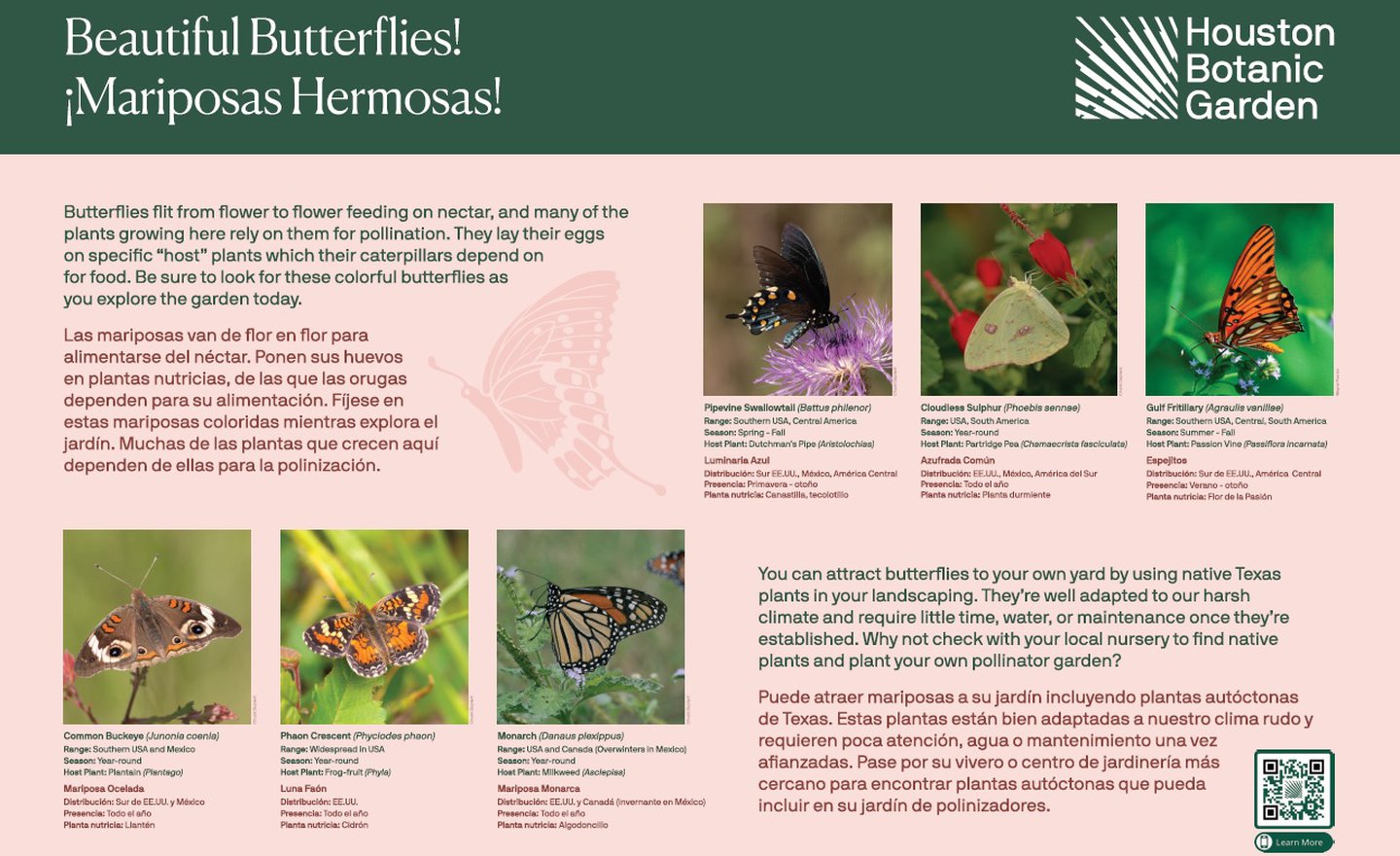Beautiful Butterflies
Pollinator Syndromes
The co-evolution of flowering plants and pollinators, like butterflies, is awe-inspiring. Each organism involved in the pollination process has evolved morphological characteristics to ensure the most successful interaction possible. Flower type, shape, color, odor, nectar, and structure vary by the type of pollinator they wish to attract, and that specific pollinator’s vision, mouthparts, sense of smell, and physical capabilities fit these flowers perfectly! These traits are known as pollinator syndromes.
While true specialization only exists in about one-third of flowering plant species, pollinator syndromes can be helpful if you wish to attract certain pollinators to your garden. Butterflies are particulary attracted to brightly colored flowers, such as red, pink, purple, and yellow. They like faintly sweet-smelling flowers that have lots of nectar, hidden at the bottom of a long floral tube. Due to their larger size, they favor flowers with large heads or clustered flowers that provide them a place to rest while feeding.
Plants in the family Verbenaceae fit the bill quite well. Lantana, which you see throughout our Pollinator Garden is a butterfly favorite, too! Plants in the family Asteraceae are also very attractive to butterflies.
Swallowtail Mimicry
At first glance, many of the swallowtail butterflies you spot sipping nectar in the Garden will look the same. This is due to a phenomenon known as Batesian mimicry. This simple concept suggests where there exists a poisonous animal, there exist imposters or look-a-likes, as well. One famous example is the venemous coral snake and the harmless milk snake.
In this case of butterflies, the pipevine swallowtail (Battus philenor) feeds exclusively on pipevines, plants in the genus Aristolochia, which contain chemicals known as aristolochic acids. These acids render pipevine swallowtail caterpillars and adults extremely unpalateble, so predators steer clear. Several other species, especially the spicebush swallowtail (Papilio troilus) and the eastern black swallowtail (Papilio polyxenes), display very similar colors and patterns, particularly on the ventral, or underside of their wings, even though they actually taste fine. The dorsal, or upperside, of their wings is a lot more variable. Why do these butterflies match on the underside of their wings? Swallowtails constantly flutter their wings when feeding on nectar or laying eggs, making that side of their wings the most visible to potential predators.
